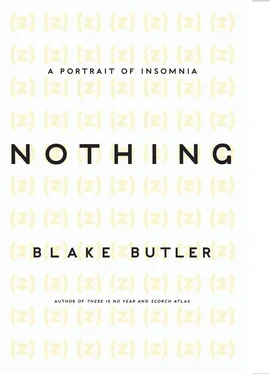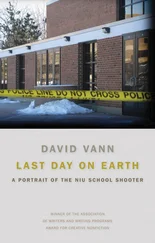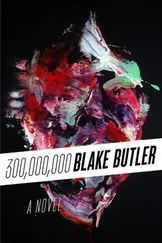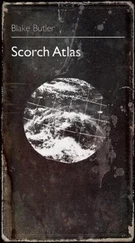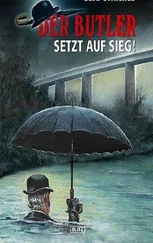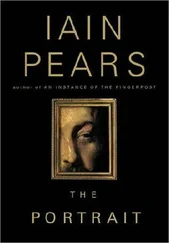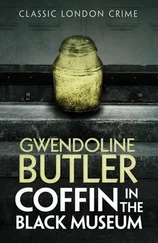]
]
]
“All people’s pictures,” wrote Clarice Lispector in 1963, “are portraits of the Mona Lisa.”152 That same year, Andy Warhol produced Thirty Are Better Than One , a work that portrays thirty Mona Lisas photocopied, black-and-white and errored, like a hive — the thirty ghosts of versions of us watching, of one body, collaged via machine. The effect from afar of the many utterances of the classic painting build en masse toward a blank field, a flattened void — the many heads together, instead of gathering one’s glown aura from the rest, form a kind of wall. “I wanted to paint nothing,” said Warhol. “I was looking for something that was the essence of nothing.” His nothing, like Lispector’s, comes from the folding of an image, blurring the space between where the individual body ends, and where all the others begin. Or vice versa. It, like any instant, seems to both confine itself and permeate the space around it, like a brain searching in itself for where it is, hiding from death. The void surrounds and stays unseen.
Lispector and Warhol, respectively, died aged fifty-six and fifty-eight, in beds that were not theirs. The message of their passing spread through mouths through wires and into more machines, leaving, past the body, only their image, word, and name — their forms aggregated as flesh into soil and water — their beings each as an idea humped as icons in the sprawl. Pictures of them now, like anybody no longer living’s pictures, seem to contain a horde of hidden self behind their eyes — locked windows to terrain never again creating or destroying, sleeping or waking — like the Mona Lisa they look and look into the viewer never blinking, always still there when the one alive still turns away.
In his eight-hour film Sleep , made the same year as Thirty Are Better Than One , Warhol exhibits a cut-up series of looped reels of his sometime lover John Giorno, transformed, as Warhol aimed, into a “star” while all unconscious, his body speaking in the absence of its controller. Warhol repurposed this human body in the same manner he had the commercial object, the copywritten. In the ribcage-rising-falling silence, rummaging over the landscape of the man, the camera remains poised, oddly electric in its capture of what many would call as close to nothing as you could ask for in a film: an automatism; a conscious kind of light, even asleep. “It just starts, you know,” Warhol said of the film, “like when people call up and say ‘What time does the movie start?’ you can just say ‘Any time.’ ”153 Using film to mimic and thus extend the images and shapes that pass by in most instances unrecorded, to herein possess and subject them to be replayed in confined time, seems to model the brain keeping the body stuck awake, and thereby tortured in what it cannot have, and also must continue having, the absorption of thoughts and air, even when one no longer wants to, shaping time’s passage with an artificial frame.
The result of such extended waking, and in the film, the long, repeating shots, is a surplus of time where time itself degrades in value, life in diminishing return, toward death, and in the wake of death a slowly tapering hallway wherein the space between death and life itself, and waking states and artificial measures, seems deforming, making copies of an act held not quite right. “Seeing everybody so up all the time made me think that sleep was becoming pretty obsolete,” Warhol predicted, “so I decided I’d better quickly do a movie of a person sleeping.”154 The underlying projection herein being that with such repeating mass and endless feeding, one day there might become among our minds a state in which we can no longer differentiate between sleeping and waking, between the doppelgänger and that from which it has been cast. The film Sleep itself, now almost fifty years in the past, in retro-viewing seems already somehow alien, controlled — even at times blurry, more like moonscapes or mannequins than something ours. It seems to suggest that the nature of our sleep itself each night is shifting right beneath us without notice, each day becoming something else, more ruined and malformed, alien even from this body spread in silence not so long ago, on screen. “I don’t know where the artificial stops and the real starts,” said Warhol.155
Even in the most benign of objects, in days fleshing, there are map notes toward potential holes between the extant and the perceived. There is a bigger body made up of the bodies, hulking in night of light and light of night, and which, when strung together, might open wide enough to enter, as in its affect of seeming sleeping without sleeping, insomnia might begin to wear around you as a house inside the house — a second, sheltered skin above the skin you’re in and beneath the ceiling or the sky, both holding out and holding in. In this way all houses could be the same house, connected in all the films and all the books, all of one air: the hotel in The Shining , in which no characters are pictured sleeping, whose walls and carpets lead the visitor through and through them, among the residue of who has been inside them all those years; the ballet school in Suspiria , where two students realize the instructors leave at night not by walking to the left, where the doors make exits, but to the right, heading deeper on into the house — a discovery which, after making an aural mental map of the building by counting footsteps, one girl is murdered in a room full of white wire, and the other, center figure (after pouring the sleep-inducing food she’s being fed into the toilet) finds not only a confluence of witches, but a door into the mouth of hell.
In these films, the fictional locations serving as settings must be channeled by actual locations, in human light. Some rooms are constructed out of soundstage walls and boxes — defined space designated for years of shape-shifting architectures, innards, and air, as well as the bodies brought into them, representing other bodies, and their posited languages supplied by someone else, played out often in replication with minor variation in pursuit of uncovering the scene to be replicated in another way, on film. This history of our creation has gone on as long as all our lives in one queue, and each day appended to in clicking, filming, named. In each, there is the brainspace and sleep lost over the anticipation of the next — the filmmaker’s years and years of manipulating mirrors and other bodies, toward the credits, in want of approaching further toward the one; the years of study of the painter, to get one stroke right, to perhaps, throughout a life, render one length and width that distinctly helps awake the thrall; something unnameable, unspoken in the fixture of a curious node inside a whitened room; holy spaces; unholy spaces; a mesh of the internal mind with the external, as with ghost sightings, ESP, séance behavior, black lights, pyramids, mob violence, installation art, computer glitches, online forums, out-of-body experience, comic books, dream interpretation, conductivity, and so on; of the common ground between these: a continuum of unheard sound — a sleeping of no sleeping, or sleeping outside sleeping, or eating outside eating, a silent floor. And among the flood of it, again, the errors: the queue of holes in continuity and imperfect rendering of form, the errors and the overlap of bodies, wrecked brain matter, hours, aligning into further wake, as it is in the human that the door must be found, and for which the door exists . A game of days. A calm embracing of no nowhere in some somewhere. A lick of houses, walking, light. “Out of the totality of the images, out of a metamorphosis of elements,” wrote Antonin Artaud, “an anorganic language develops which enters our consciousness by osmosis and needs no translation into words.” Words, false models, stacked in albums, lined in faces, clinging hard to time to make time beyond go beyond time, which as it continues, must continue to deform the shape of the face in its wake, to keep it hidden, as the flesh and word and photo replication-body grows, fed by the living in restless output to amass around the dead.
Читать дальше
